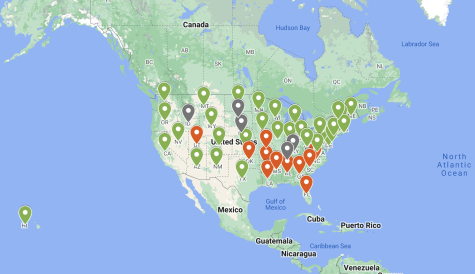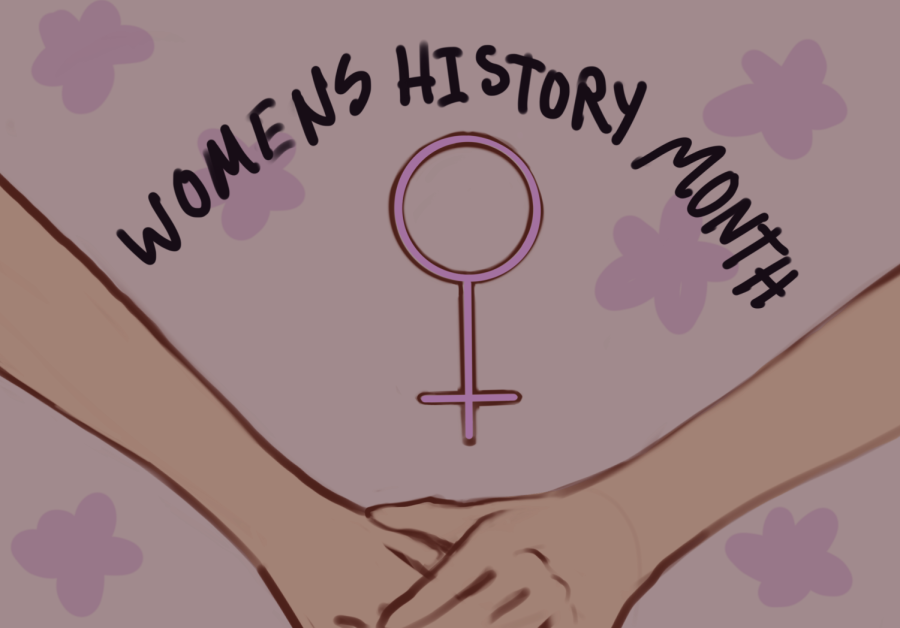Women’s History Month: The struggle for equal rights continues
Awareness of equality during Women’s History Month sheds light on the history and current state of the Equal Rights Amendment in the United States. Recognizing its significance is key to the advancement of equality in society, as explored by writer Beatrice Barnes.
March 30, 2023
March is Women’s History Month, a time for celebration and recognition of the vital role women and people across the gender spectrum have played in American history. For centuries, women have faced oppression and they are still not guaranteed equal rights in the United States (U.S.) Constitution. In fact, the right to vote is the only law in the United States Constitution that applies to all sexes equally. The Equal Rights Amendment (ERA) guarantees women equal status to men beyond the right to vote. The Amendment states, “Equality of rights under the law shall not be denied or abridged by the United States or by any state on the account of sex.” The ERA was originally drafted in 1923, and 100 years later has yet to be ratified by Congress. The ERA would affirm that gender discrimination does not align with the core values of our nation, and this specification holds the power to significantly advance equality, as its impact would extend to a multitude of areas.

Some argue that the 14th Amendment, which includes the Equal Protection Clause, already prohibits discrimination on the basis of gender, therefore deeming the ERA outdated and unnecessary. However, the 14th Amendment fails to include or even mention women, as it was ratified in 1876 to give previously enslaved males equal protection and voting rights. The late Justice Antonin Scalia concluded, “Certainly the Constitution does not require discrimination on the basis of sex. The issue is whether it prohibits it. It doesn’t.” This distinction is key, because it reveals the lack of protection constitutionally guaranteed for women. Additionally, Cherie Eulau, the AP United States Government & Politics and World History teacher at Foothill Technology High School (Foothill Tech) agrees: “the [ERA] would be helpful and not superfluous.” Basic liberties are at risk without the protection of this amendment, and threats to bodily autonomy have already begun to play out.
What would the ERA protect?
After nearly 50 years, the Supreme Court case Roe v. Wade was overturned in June 2022, giving individual states the ability to criminalize abortion. Roe fell because of the Supreme Court’s decision in Dobbs v. Jackson Women’s Health Organization, which ended the federal right to an abortion. Abortions are now illegal in 13 states, which means people are being discriminated against based on their capacity to reproduce. Across the country, not all people share the same right to healthcare and freedom to make informed medical decisions absent of government intrusion. Eulau voices her opinion, saying, “in the minds of the Supreme Court (SCOTUS) abortion is a separate issue, but passing the ERA might allow us to revisit the issue in terms of a Constitutional right.” If the ERA was ratified, states would not be able to infringe on constitutional gender equality rights, which would provide a strong legal claim against abortion bans and protect many other rights, including access to contraception.
The ERA would also protect LGBTQ+ rights, currently targeted by many states through the enactment of anti-trans policies. In 2023 alone, 124 bills targeting LGBTQ+ people have been introduced across the country. These bills threaten freedom of expression, access to gender affirming healthcare and the safety of transgender students. This is discrimination against individuals based on their gender identity and sexual orientation, which would violate principles of gender equality established by the ERA. Mikaela Clabaugh ‘25 shares, “Gender inclusivity and equity (more than equality) are extremely important to me because I have seen and heard of far too many occasions where female identifying, nonbinary, or gender queer people are mistreated or put down simply for being born in a society where white cisgender men run most everything.”
Why hasn’t the ERA been ratified yet?
The ERA was originally born out of the women’s suffrage movement, drafted in 1923 by suffragette Alice Paul. Women had just been given the right to vote in 1919, and the ERA was considered an essential next step after the success of the 19th Amendment.
Years later in 1972, the ERA finally took priority in Congress and was sent out to the states with a seven-year ratification deadline. 38 states, a two-thirds majority, would have to ratify the amendment within this timeline for it to be passed. Only 35 states had ratified it by 1977, so Congress voted to extend the deadline by three years. During this time no new states ratified the ERA, but conservative opposition campaigns gained momentum. Five states — Nebraska, Tennessee, South Dakota, Idaho and Kentucky — voted to rescind, or revoke, their prior support of the amendment, further complicating the situation. Presently, it remains unclear as to whether these states are legally allowed to rescind their support.
The ERA’s future seemed grim, but the 21st century has come with a new push for women’s rights and equality. In 2017, a renewed interest in the ERA came to fruition when Nevada became the first state to ratify the amendment since 1977. Soon after, Virginia officially became the 38th state to ratify on Jan. 15, 2020.
But do these votes even count 48 years after the ERA’s original proposition? Since Nevada and Virginia ratified long after the previous deadline, the question of whether or not Congress has the power to override the deadline is up for debate. Although some argue that it’s too late to pass the ERA, the Constitution doesn’t explicitly state that Congress must abide by former deadlines when attempting to ratify an amendment. At this stage, official ratification is in the hands of Congress, but advocacy and education can help to spread awareness around women’s rights and gender equality in the U.S.
How can we create change in our own community?
Gender discrimination is even prevalent at Foothill Technology High School (Foothill Tech), and progress towards equality can be made in our immediate community. Clabaugh notes that, “Foothill could add more women to their English reading lists because most, but not all, of our material is written by white men.” Diversifying the array of authors in school curriculum effectively supports and empowers underrepresented groups, and Eulau adds, “as a teaching staff we need to help each other do a better job of recognizing when we only use male (or female) examples, or prejudge students based on their gender.” Joining the Girl Up club or signing up for the Ethnic Studies and Social Justice course are opportunities at Foothill Tech to learn about and participate in advocacy for equal rights.















